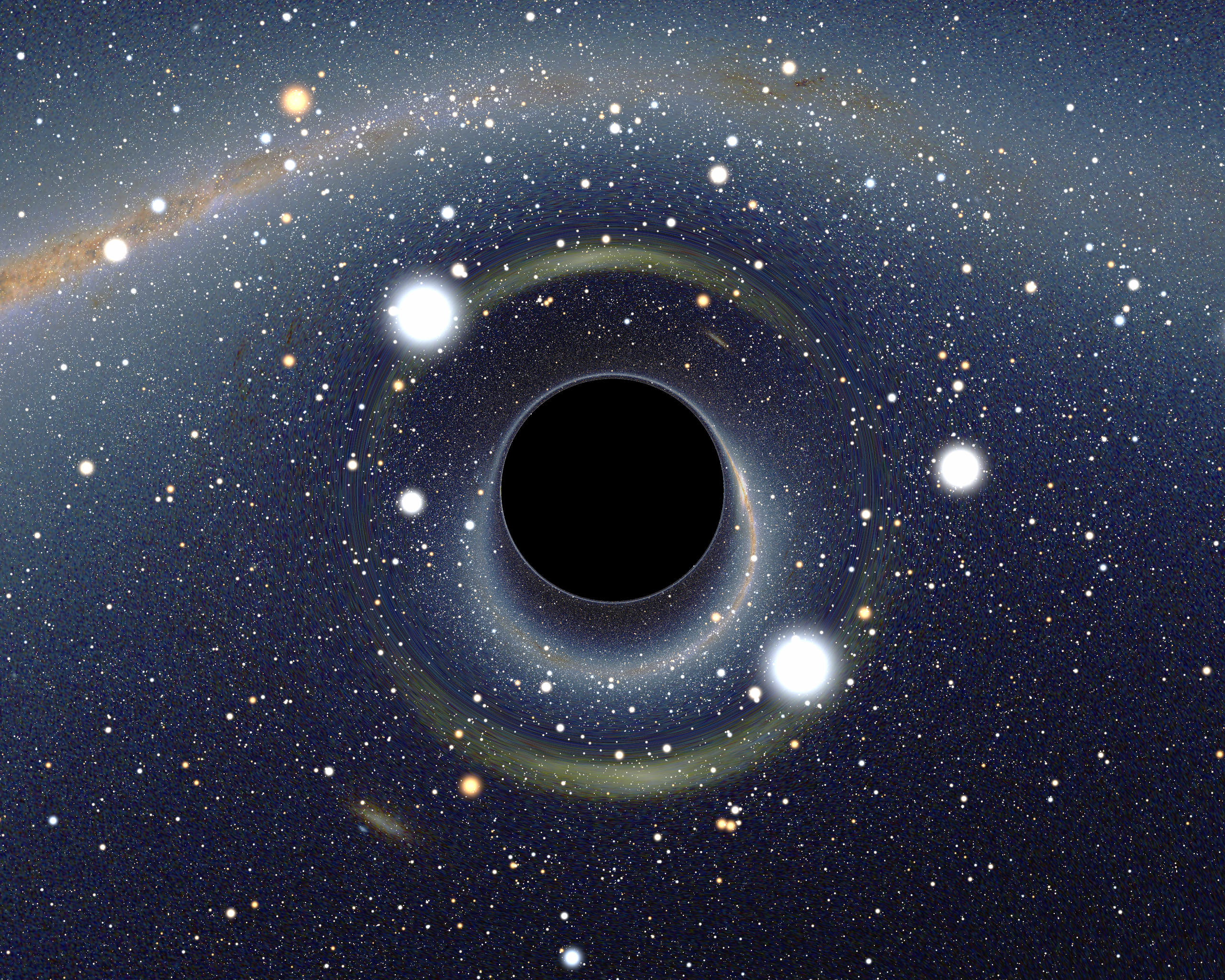|
CENBOL
In astronomy, CENBOL (derived from "CENtrifugal pressure supported BOundary Layer) is a model developed by the astrophysicist Sandip Chakrabarti and collaborators to explain the region of an accretion disk, accretion flow around a black hole. Centrifugal force dominated boundary layer Because centrifugal force l2/r3 increases very rapidly compared to the gravitational force (which goes as 1/r2) as the distance r decreases, matter feels increasing centrifugal force as it approaches a black hole. Thus the matter initially slows down, typically through a shock transition, and then accelerates again to become a Supersonic speed, supersonic flow. The importance of CENBOL is that it behaves like a boundary layer of a black hole. This region is located between the Bow shocks in astrophysics, shock and the innermost sonic point of an accretion disk, accretion flow. CENBOL becomes hot due to sudden reduction of radial kinetic energy and the flow is puffed up, since hot gas can fight agai ... [...More Info...] [...Related Items...] OR: [Wikipedia] [Google] [Baidu] |
Sandip Chakrabarti
Sandip Chakrabarti is an Indian astrophysicist. He developed a computer model to show how life on earth could have originated in outer space. Education He started his education in Lalit Mohan Shyam Mohini High School in Malda. After finishing his Bachelor of Science from Ramakrishna Mission Residential College, Narendrapur in Physics Honours in 1979 (and becoming topper of Calcutta University) he went to IIT, Kanpur to complete his M.Sc. Degree in Physics in 1981. He joined the Physics Dept. of the University of Chicago in 1981 to complete PhD work. Soon he completed a paper with Robert Geroch and X.B. Liang on a Theorem on "Time like Curves of limited acceleration in General Relativity", and under S. Chandrasekhar's supervision solved the Dirac equation for massive particles with spin in Kerr geometry. Subsequently, he concentrated on black hole astrophysics, received his Ph.D. in 1985 and went to Caltech as a R.C. Tolman Fellow. Major work in this period includes finding ... [...More Info...] [...Related Items...] OR: [Wikipedia] [Google] [Baidu] |
Accretion Disk
An accretion disk is a structure (often a circumstellar disk) formed by diffuse material in orbital motion around a massive central body. The central body is typically a star. Friction, uneven irradiance, magnetohydrodynamic effects, and other forces induce instabilities causing orbiting material in the disk to spiral inward towards the central body. Gravitational and frictional forces compress and raise the temperature of the material, causing the emission of electromagnetic radiation. The frequency range of that radiation depends on the central object's mass. Accretion disks of young stars and protostars radiate in the infrared; those around neutron stars and black holes in the X-ray part of the spectrum. The study of oscillation modes in accretion disks is referred to as diskoseismology. Manifestations Accretion disks are a ubiquitous phenomenon in astrophysics; active galactic nuclei, protoplanetary disks, and gamma ray bursts all involve accretion disks. These disks very ... [...More Info...] [...Related Items...] OR: [Wikipedia] [Google] [Baidu] |
Black Hole
A black hole is a region of spacetime where gravitation, gravity is so strong that nothing, including light or other Electromagnetic radiation, electromagnetic waves, has enough energy to escape it. The theory of general relativity predicts that a sufficiently compact mass can deform spacetime to form a black hole. The boundary (topology), boundary of no escape is called the event horizon. Although it has a great effect on the fate and circumstances of an object crossing it, it has no locally detectable features according to general relativity. In many ways, a black hole acts like an ideal black body, as it reflects no light. Moreover, quantum field theory in curved spacetime predicts that event horizons emit Hawking radiation, with thermal radiation, the same spectrum as a black body of a temperature inversely proportional to its mass. This temperature is of the order of billionths of a kelvin for stellar black holes, making it essentially impossible to observe directly. Obje ... [...More Info...] [...Related Items...] OR: [Wikipedia] [Google] [Baidu] |

